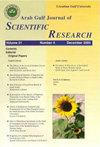多重ARMS-PCR用于巴基斯坦KP近缘人群β -珠蛋白基因突变分析
Q4 Business, Management and Accounting
引用次数: 0
摘要
ß-地中海贫血是由于11号染色体上ß-珠蛋白基因突变而导致的一种遗传性疾病。在已知的200个ß-珠蛋白基因链突变中,最好确定特定区域和种族中最常见的突变,以便对该疾病进行具有成本效益的分子诊断。因此,本研究旨在对开伯尔-普赫图赫瓦省(KP)地中海贫血患者进行多重扩增难解突变系统(ARMS) PCR,探讨ß-珠蛋白链基因中最常见的突变。设计/方法/方法22名个体(患者、其父母和未受影响的兄弟姐妹)经签署同意从6个地中海贫血的近亲家庭中进行研究。采集血样进行DNA分离。采用ARMS-PCR检测ß-珠蛋白基因突变。扩增子通过2%琼脂糖凝胶可见。结果研究区不同民族居民中最常见的突变为Fr 8-9 (+G)和IVS 1-5 (G> C)。家族间通婚和缺乏意识是ß-地中海贫血的显著增强因素。实际意义多重ARMS_PCR是评估单个反应管中多个突变最有价值的技术。由于广泛发现的种族和地区差异以及高血缘率,普什图人的基因组有很大的突变风险。因此,ARMS-PCR是一种具有成本效益的突变诊断策略,可以帮助控制疾病负担。独创性/价值有限的研究使用ARMS-PCR进行突变分析ß-珠蛋白基因。这项研究是独一无二的,因为它针对的是KP巴基斯坦的近亲家庭。本文章由计算机程序翻译,如有差异,请以英文原文为准。
The use of multiplex ARMS-PCR for mutational analysis of beta-globin gene in consanguineous population of KP Pakistan
Purposeß-thalassemia is a hereditary disorder due to mutation in the ß-globin gene on chromosome 11. Out of 200 known ß-globin gene chain mutations recognized, it is better to identify the most common mutation in specific regions and ethnicity for cost-effective molecular diagnosis of this disorder. Therefore, this study aims to practice multiplex-amplification refractory mutation system (ARMS) PCR on patients with thalassemia in Khyber Pakhtunkhwa (KP) to investigate the most common mutations in the ß-globin chain gene.Design/methodology/approachTwenty-two individuals (patients, their parents and non-affected siblings) with signed consent were studied from six consanguineous families of ß-thalassemia. Blood samples were collected for DNA isolation. For the detection of mutations in the ß-globin gene, ARMS-PCR was used. The amplicon was visualized through 2% Agarose Gel.FindingsThe most common mutations among different ethnic groups in the study area residents were Fr 8-9 (+G) and IVS 1-5 (G> C). The prominent enhancing factors for ß-thalassemia are inter-family marriages and lack of awareness.Practical implicationsMultiplex ARMS_PCR is the most valuable technique for assessing multiple mutations in a single reaction tube.Social implicationsDue to extensively found ethnic and regional variations and a high rate of consanguinity, the Pashtun population has a great risk of mutations in their genome. Therefore, ARMS-PCR is a cost-effective mutational diagnostic strategy that can help to control disease burden.Originality/valueLimited studies using ARMS-PCR for mutational analysis in the ß-globin gene are conducted. This study is unique as it targeted consanguineous families of KP Pakistan.
求助全文
通过发布文献求助,成功后即可免费获取论文全文。
去求助
来源期刊

Arab Gulf Journal of Scientific Research
综合性期刊-综合性期刊
CiteScore
1.00
自引率
0.00%
发文量
0
审稿时长
>12 weeks
期刊介绍:
Information not localized
 求助内容:
求助内容: 应助结果提醒方式:
应助结果提醒方式:


